Things to Do at St. Petersburg, Russia
Comprising the former Imperial capital of Russia, there’s no denying that St. Petersburg is a city that’s steeped in royalty. Known as the ‘City of the Czars’, the Czars – the rulers of Russia – called this city home more than 300 years ago.
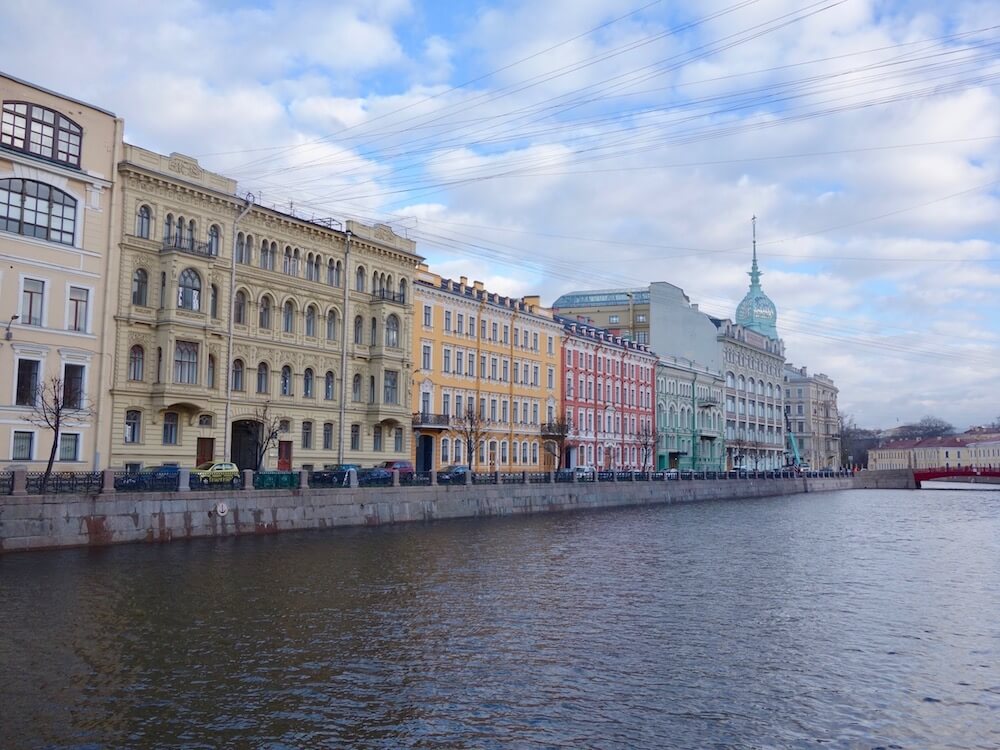
And as one would expect of such a city, its elegance and sophistication shine through its golden trio of architecture, history and culture. After Moscow, St. Petersburg is the second-largest city in Russia and is also colloquially known as the country’s cultural capital.
The best part? St. Petersburg is also much more affordable to visit as compared to its Western counterparts! Here’s what you can do in the city:
Marvel at the architecture
Take a wander around St. Petersburg’s streets and feast your eyes on a variety of elaborate buildings, each being of varying significance.

The Church of the Saviour on Spilled Blood (also known as the Church of the Resurrection of Jesus Christ) is St. Petersburg’s most famous landmark and, interestingly, is barely even 100 years old. The church stands on the location where Czar Alexander II was assassinated in 1881 – hence its name.
Taking 24 years to construct, the church first opened in 1907. However, bouts of looting and vandalism forced its doors closed in 1932, before finally opening to the public again in 1997. Now, the church functions as a museum. Before its opening, the church even served as a warehouse to store food during World War II!
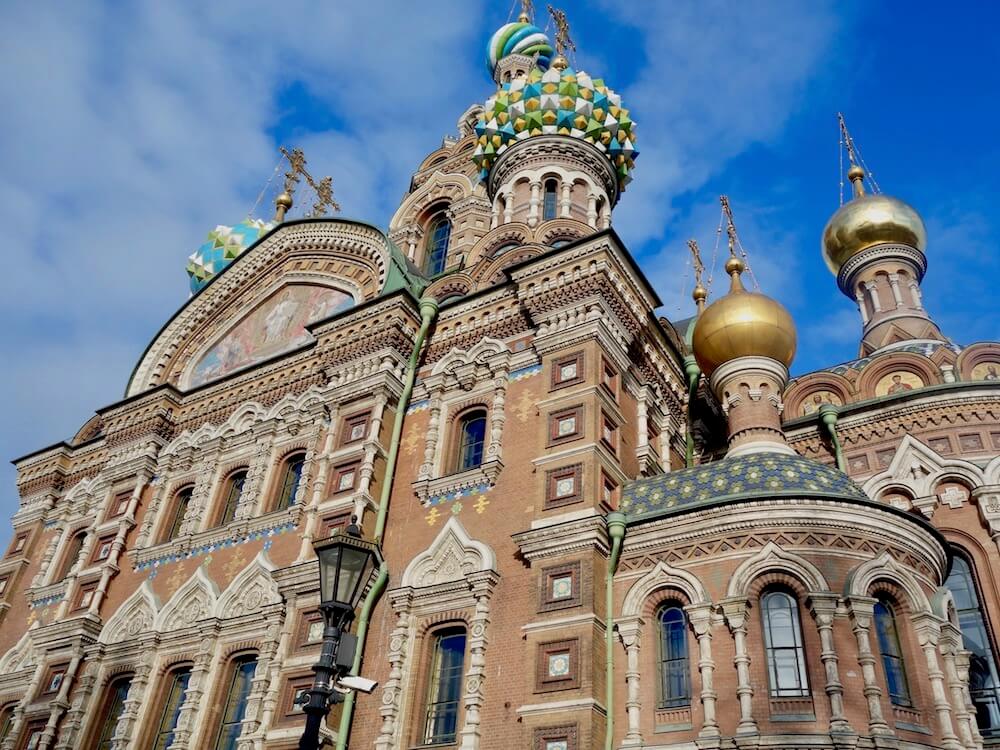
The church’s exterior is done up in a Russian Orthodox-style, which is iconic of the country’s culture. The church is open from 10am to 6pm daily, except Wednesdays. An entrance fee of RUB250 (~SGD5) is required to enter.
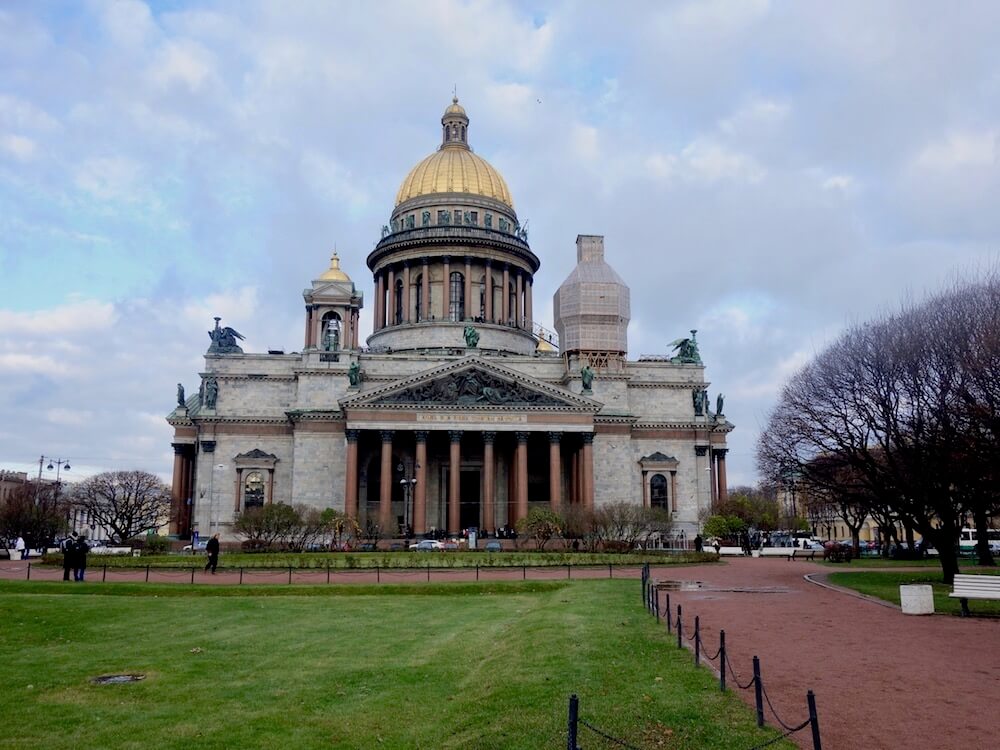
The fourth-largest cathedral in the world, St. Isaac’s Cathedral is also the largest orthodox basilica in the world. To take that into perspective, the cathedral is big enough to house 14, 000 people standing inside!
The statue of the Bronze Horseman stands in front of the cathedral – and is one of the most iconic symbols of St. Petersburg.
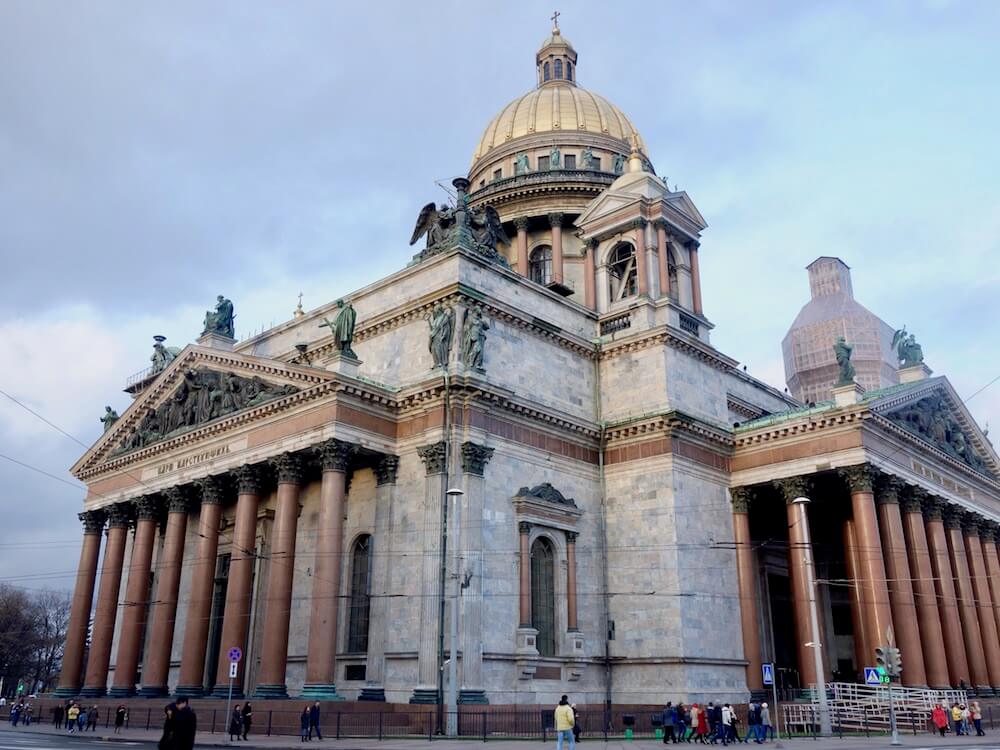
St. Isaac’s Cathedral is topped by an opulent gold dome, which is made from over 100 kilograms of gold! Venture up approximately 260 steps to the top of the cathedral for a spectacular view of the city from 43 metres above the ground.
The cathedral now functions as a museum. It’s open from 10.30am to 10.30pm daily, except Wednesdays; with an entrance fee of RUB250 (~SGD5).
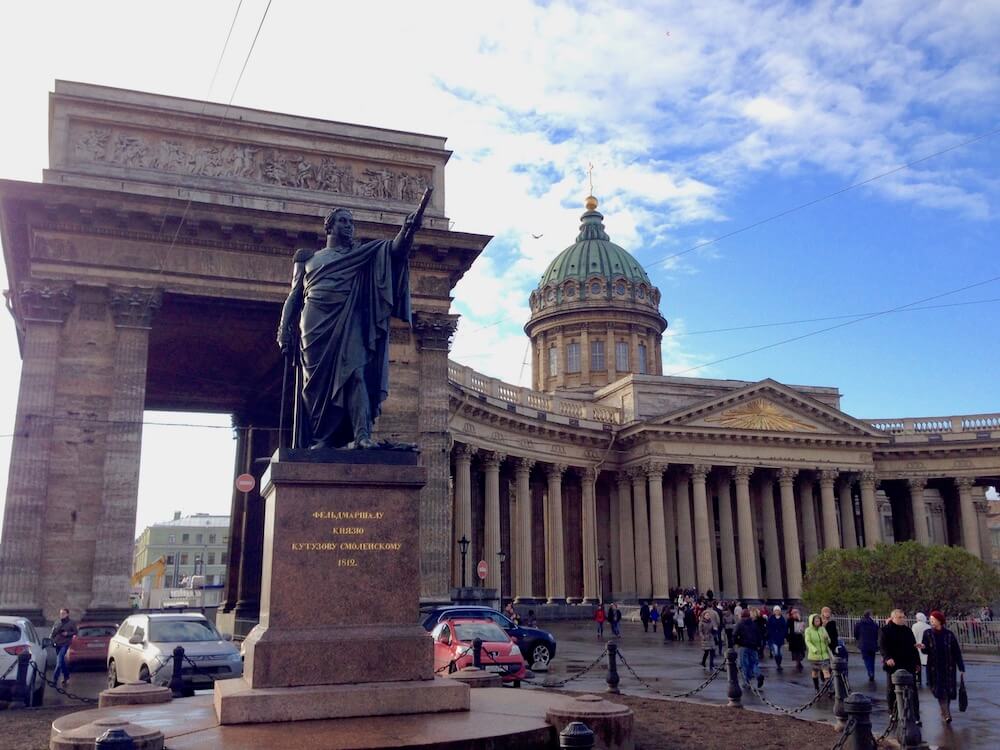
Constructed between 1801 and 1811, the Kazan Cathedral is dedicated to Our Lady of Kazan, one of St. Petersburg’s most revered icons. The cathedral was commissioned by Emperor Paul I, who wished for the compound to resemble Italy’s Vatican City.
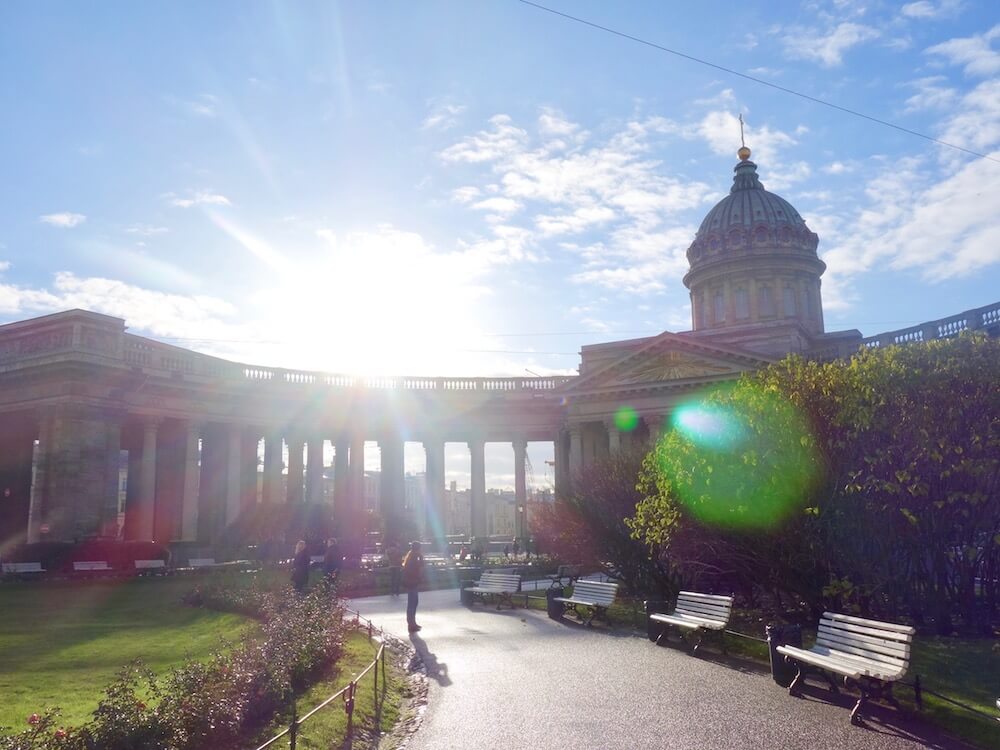
The Cathedral rose to fame after the war of 1812 when Napoleon was defeated, where it was designated the burial location for Mikhail Kutuzov, a renowned Russian field operator who won the most monumental campaign of that time. The cathedral was hence seen as an icon of Russian victory!
Regular services were resumed in the cathedral; however, the cathedral also houses a museum, which is open from 9am to 7.45pm daily except on Sundays, where it is open at 6.30pm. Admission to the cathedral is free.
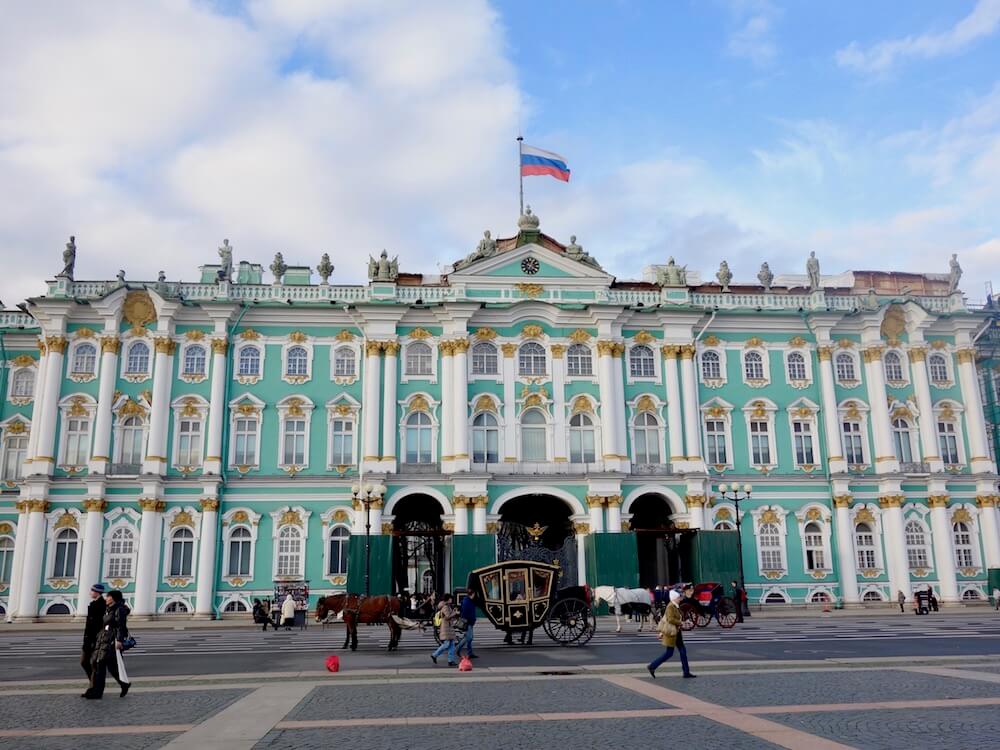
The Hermitage Museum is one sight in St. Petersburg that you just can’t miss . Being one of the oldest and largest museums in the world, the museum is often said to be on par with the Louvre in Paris. Located inside the Winter Palace of Empress Catherine the Great, the museum is home to magnificent artworks by Van Gogh, Monet and Leonardo Da Vinci – on top of a staggering 1, 500 rooms.
In fact, there are over 3 million pieces of art in the museum. Imagine that! The museum is open from 10.30am to 6pm daily (with extended opening hours to 9pm on Wednesdays and Fridays), and is closed on Mondays. The entrance fee costs RUB300 (~SGD6) and is free every third Thursday of the month.
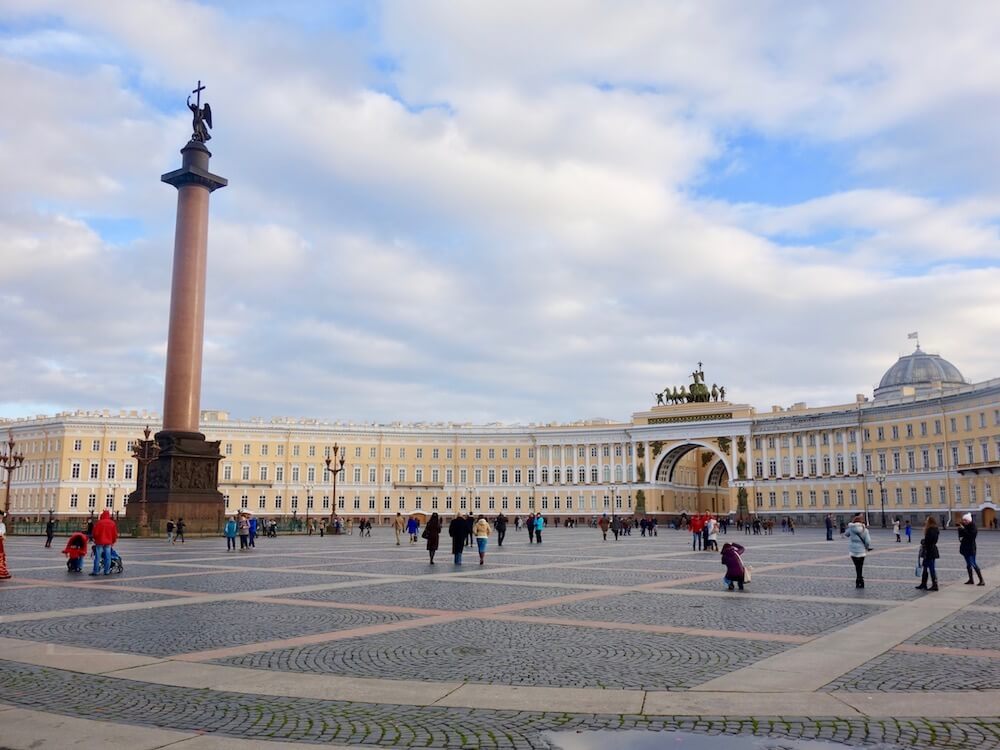
The Palace Square separates the Hermitage Museum from the Ministries Building and now functions as a congregation point for locals. Fun fact: the square is considered by many locals to be one of the 10 most beautiful places in Russia!
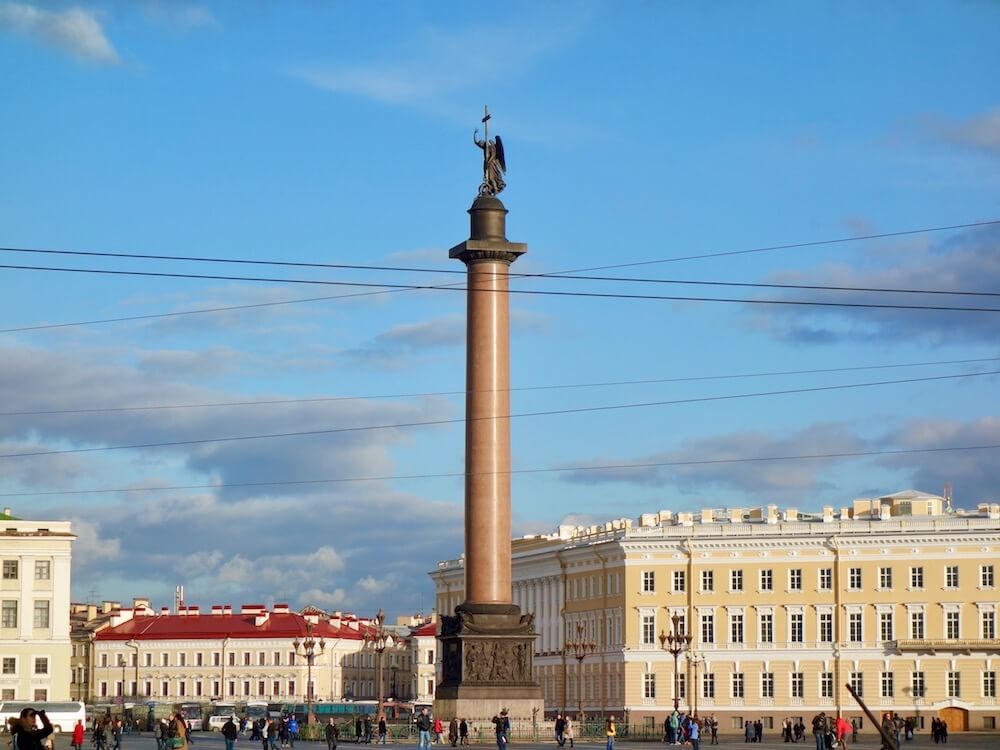
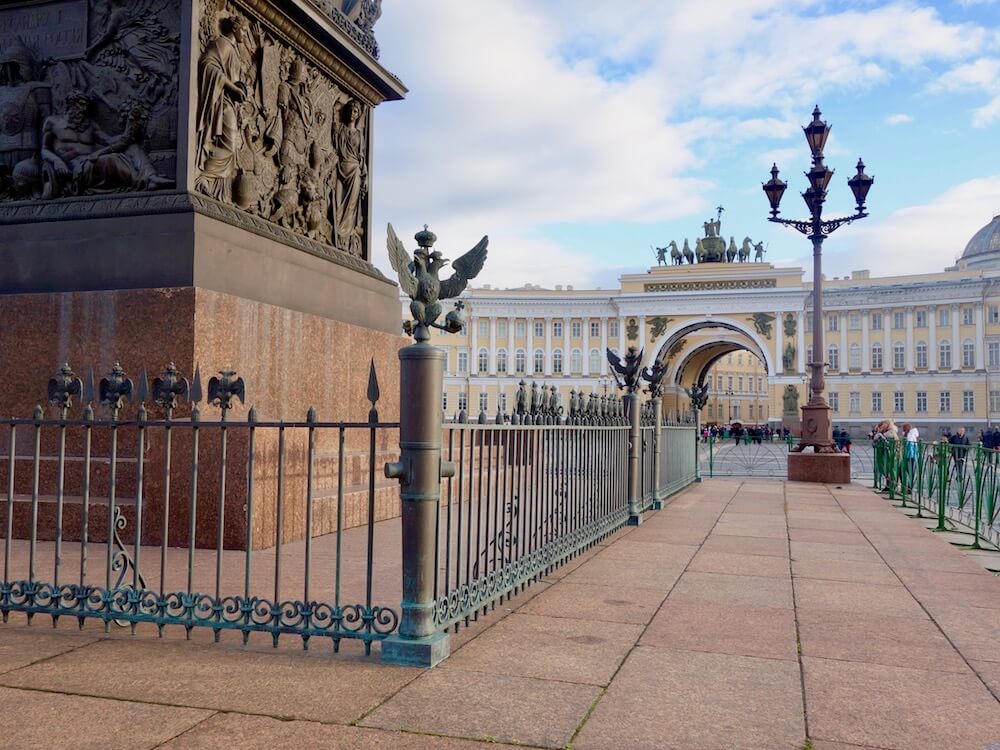
The Alexander Column is the focal point of the square; can you imagine that the column actually weighs a hefty 704 tons?
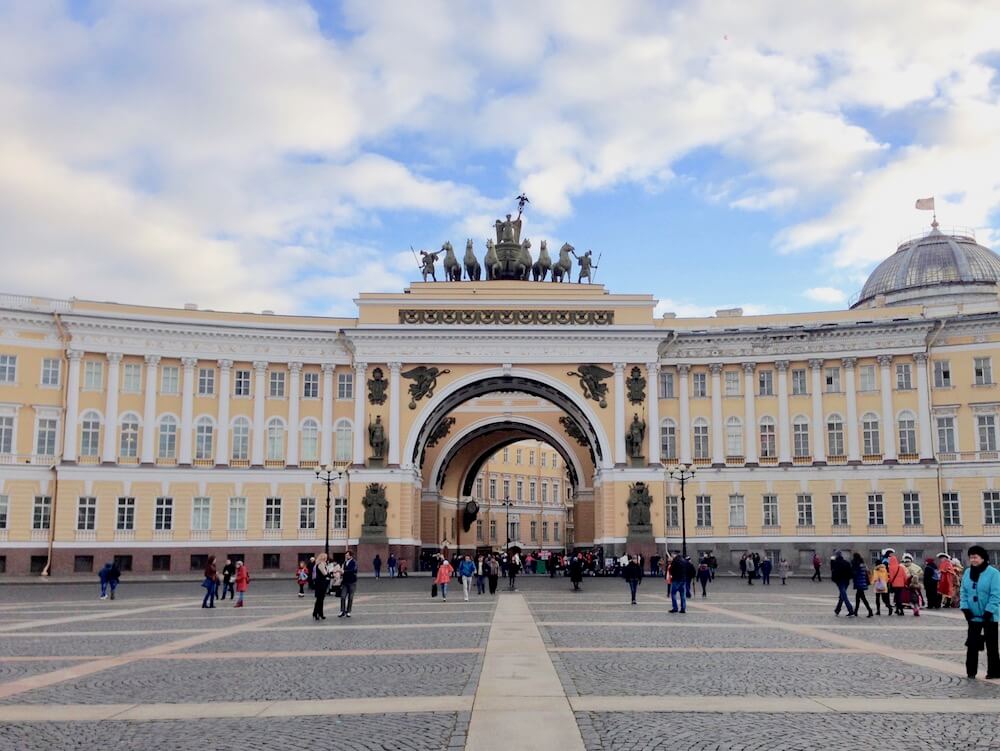
One one end of Parade Square stands the impressive 580-metres long General Staff and Ministries Building. Built from 1819 to 1829, the building’s west wing used to house the Headquarters of the General Staff of the Russian Army, with its east wing being home to the Ministries of Foreign Affairs and Finance.
In 1993, the east wing became part of the Hermitage Museum, while the West wing continues to hold the headquarters of the Western Military District.
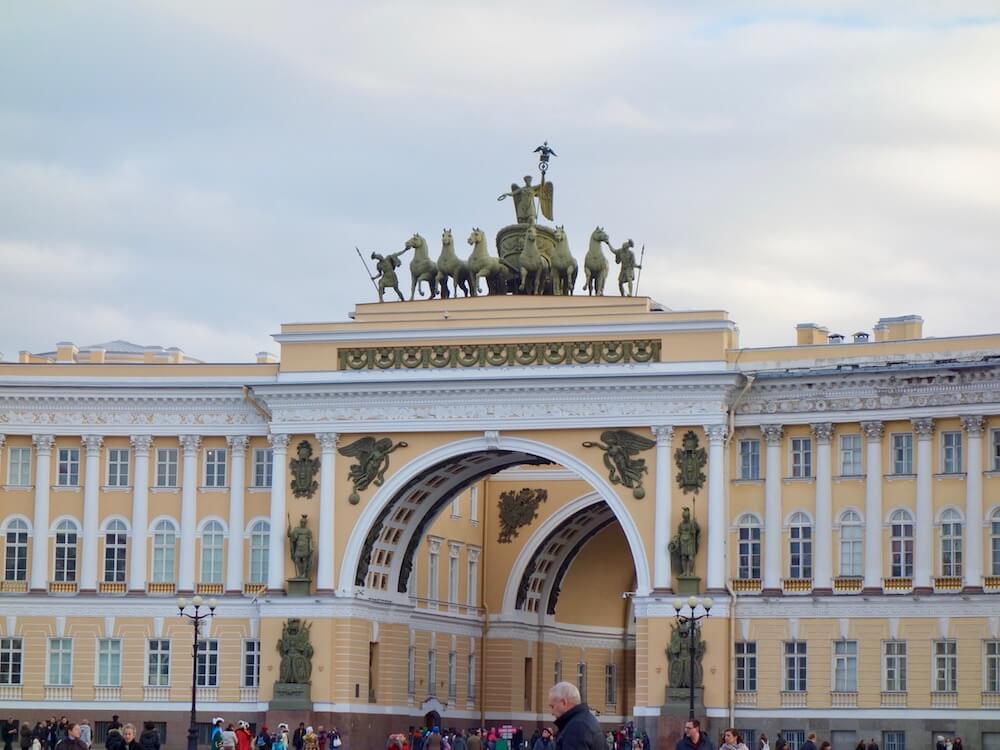
As a testament to Napoleon’s 1812 victory, the striking archway was adorned with a statue of the Goddess of Glory atop a glorious chariot pulled by horses.
Touch the gilded wing of a gryphon on the Bank Bridge
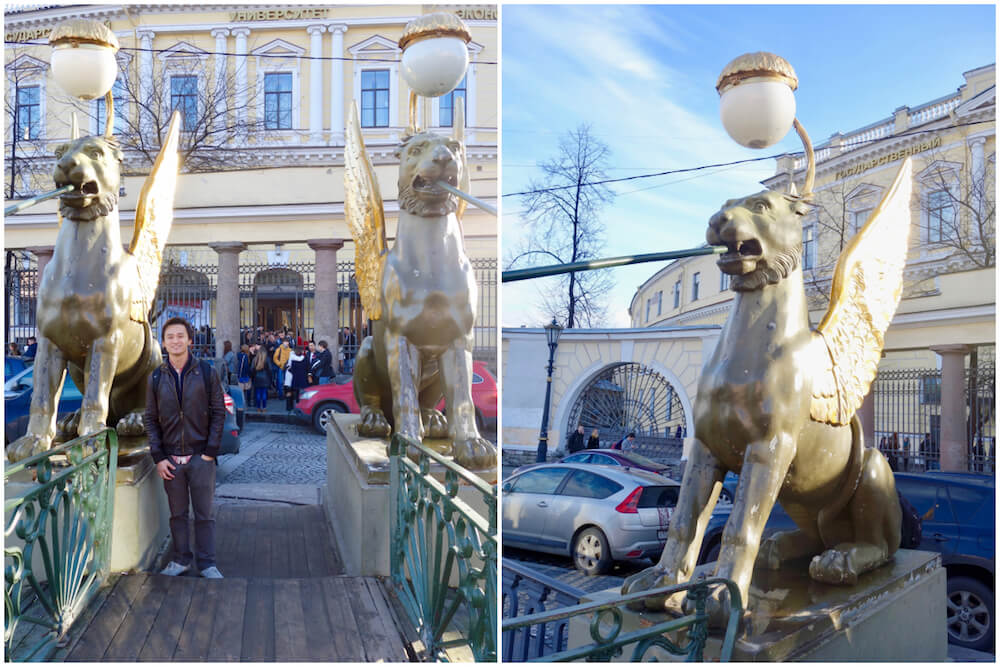
Built in 1825, the Bank Bridge is one of the 3 suspension bridges in St. Petersburg that has been preserved in its original form. The bridge is known for four statues of gryphons, each boasting gilded wings made of copper and covered in real gold. It was built in front of the Currency Bank, which was no coincidence – according to Greek Mythology, gryphons are believed to be trusted keepers of wealth and treasure. Hence, the state money was seen to be in safe hands by placing the gryphons in front of the one of the city’s largest banks.
At a width of 1.85 metres, the bridge is also considered to be the narrowest bridge in the city.
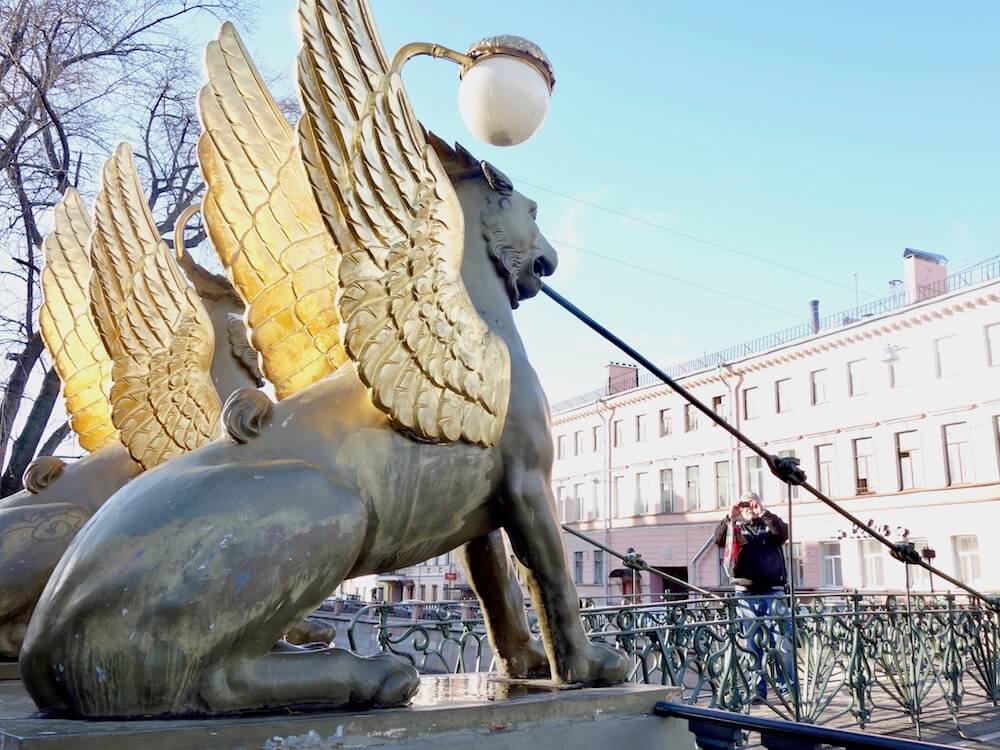
Many local beliefs surround the gryphons, most of which relate to the bringing of wealth. For good luck, locals believe in rubbing the left hip of the gryphon located closest to the Kazan Cathedral; it’s also said that luck will shine on those that jingle some change in their pocket as they cross the bridge. In fact, just touching the gilded wings of the gryphons is said to turn one luck’s around!
Have a shopping spree at the Au Pont Rouge Department Store
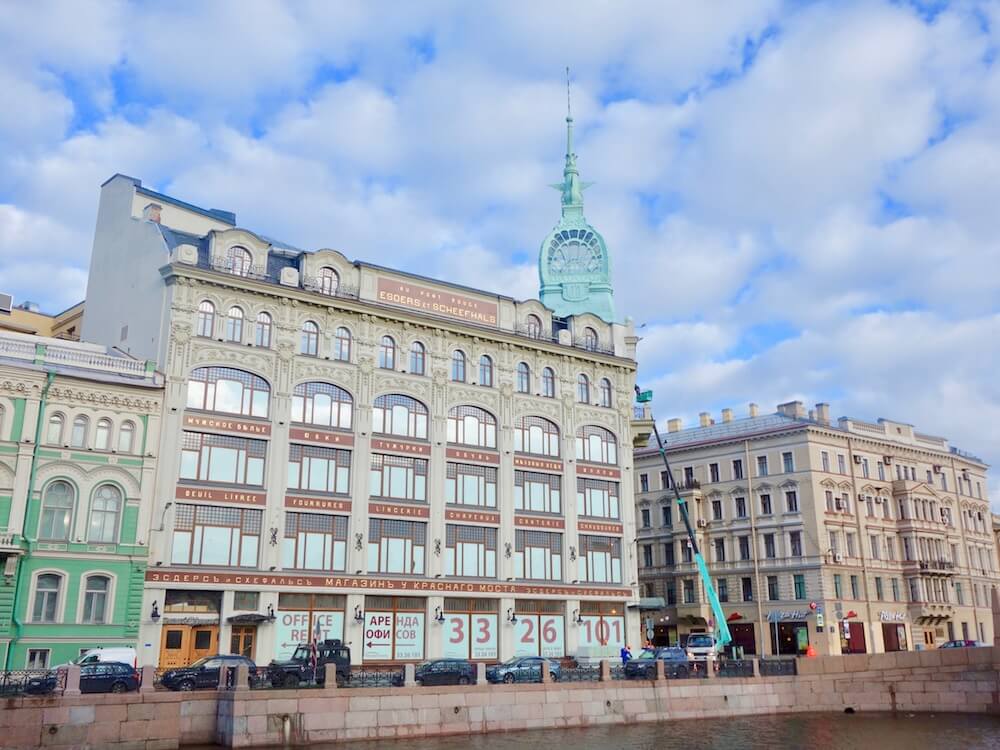
Comprising the first multi-storied department store in Russia, the Au Pont Rouge Department Store is a haven for shopaholics. Founded in 1907, it was a place to see and be seen, serving as the the shopping mall of choice for the rich and famous – including the Imperial Family.
Refuel after your shopping spree at the panoramic restaurant on the 7th floor, which offers a view of the bustling streets below.
Get lost in the House of Books
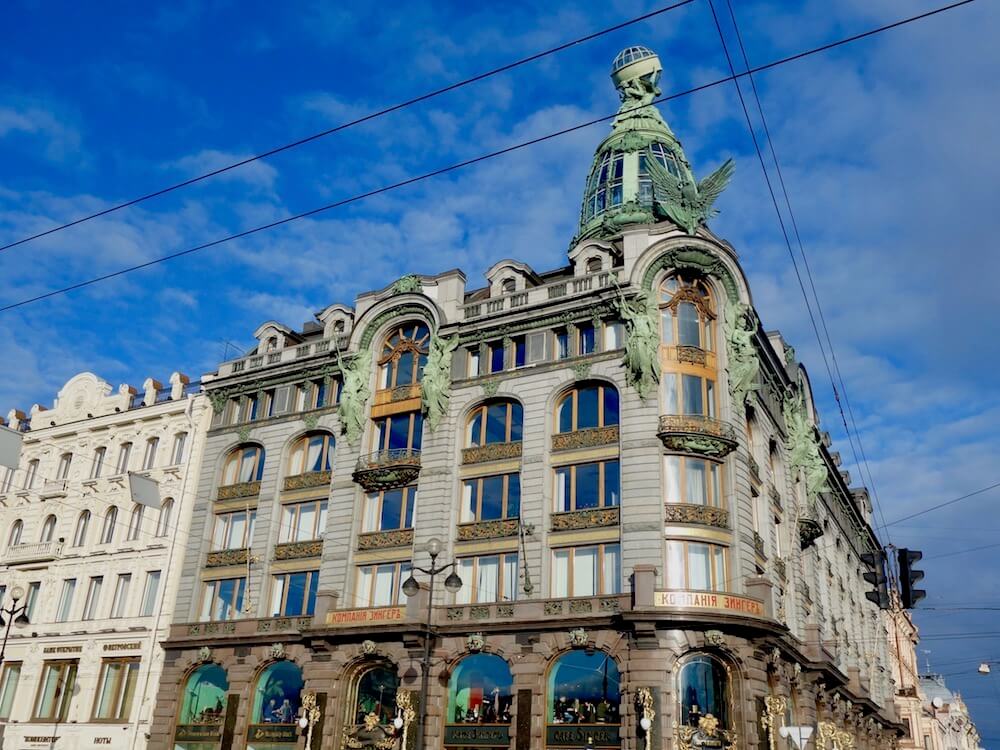
With a collection of over 20, 000 books in Russian and various languages, the Dom Knigi building is also known as the ‘House of Books’ – and aptly so! The building was the first in St. Petersburg to be built with a metal frame, and also houses a glass-roofed atrium and an automated system that clears snow from the roof.
A bit of history about the building: during the Siege of Leningrad from 1941 to 1944, the building next to Dom Knigi was bombed, causing Dom Knigi’s windows to be shattered and flooding its storerooms. Yet, the bookstore remained unfazed and even continued to operate!
Cruise down the canals
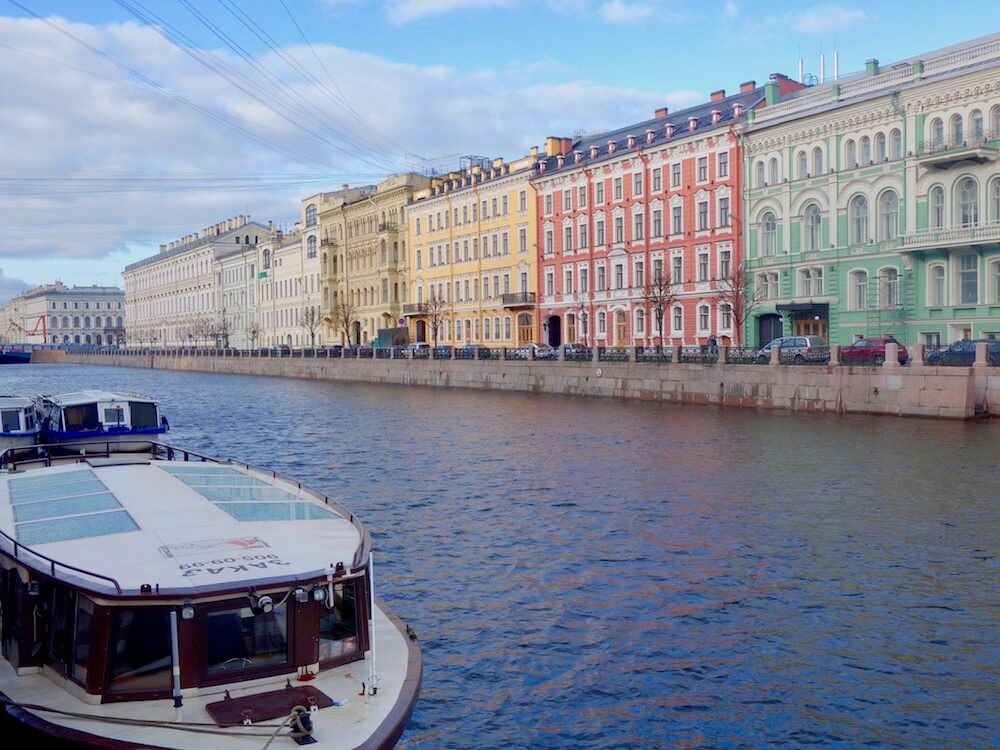
Fondly nicknamed ‘Venice of the North’, St. Petersburg is home to a crisscross maze of canals that cut through the city. With over 3 kilometres worth of canals, the original intention was to only have boats as the primary mode of transport!
A cruise is a great way to take in the city from another perspective; however, do note that cruises don’t run during the winter as the canals completely freeze over during that time.
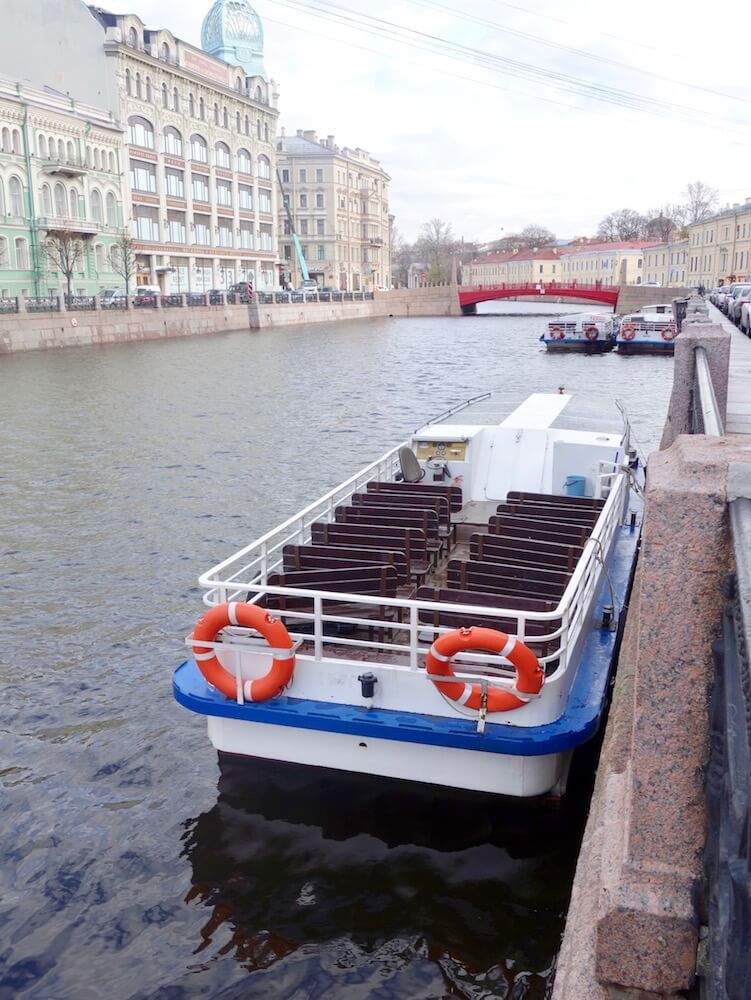
Most boats have retractable roofs, which are pulled back in the summer.
Check out the Rostral Columns
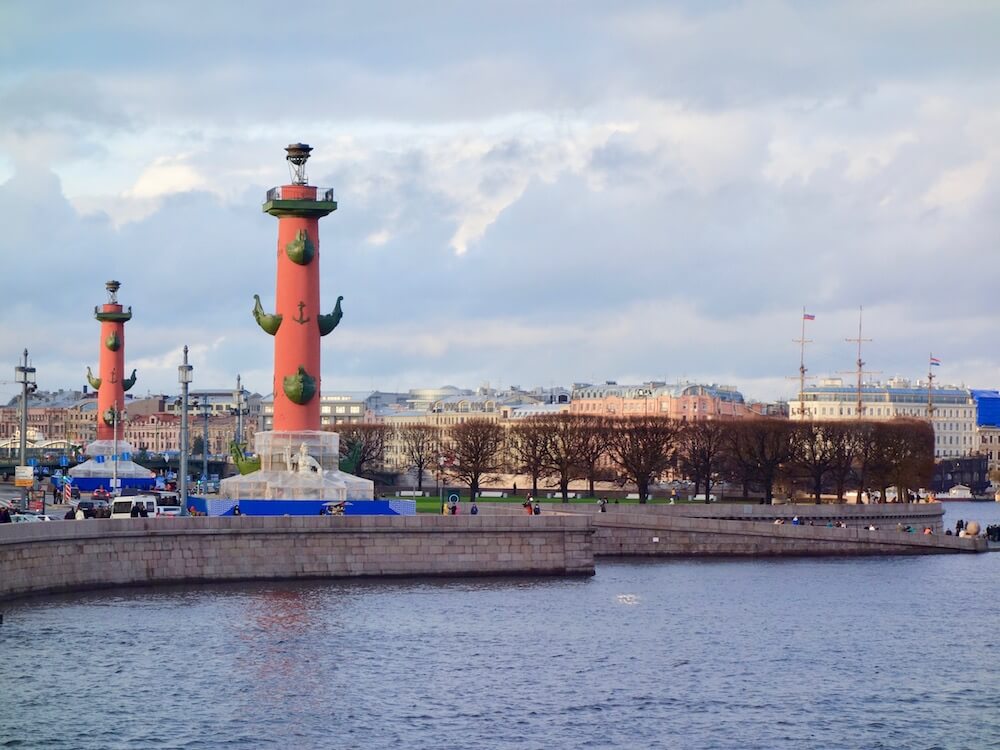
Located on the Eastern tip of Vasilievsky Island, the Rostral Columns previously served as beacons to guide ships. When dusk fell, oil lamps at the top of the columns were lighted to signal the ships – and till today, are still lit on major national holidays.
The Rostral Columns can be viewed along the River Neva, which is the main waterway of St. Petersburg.
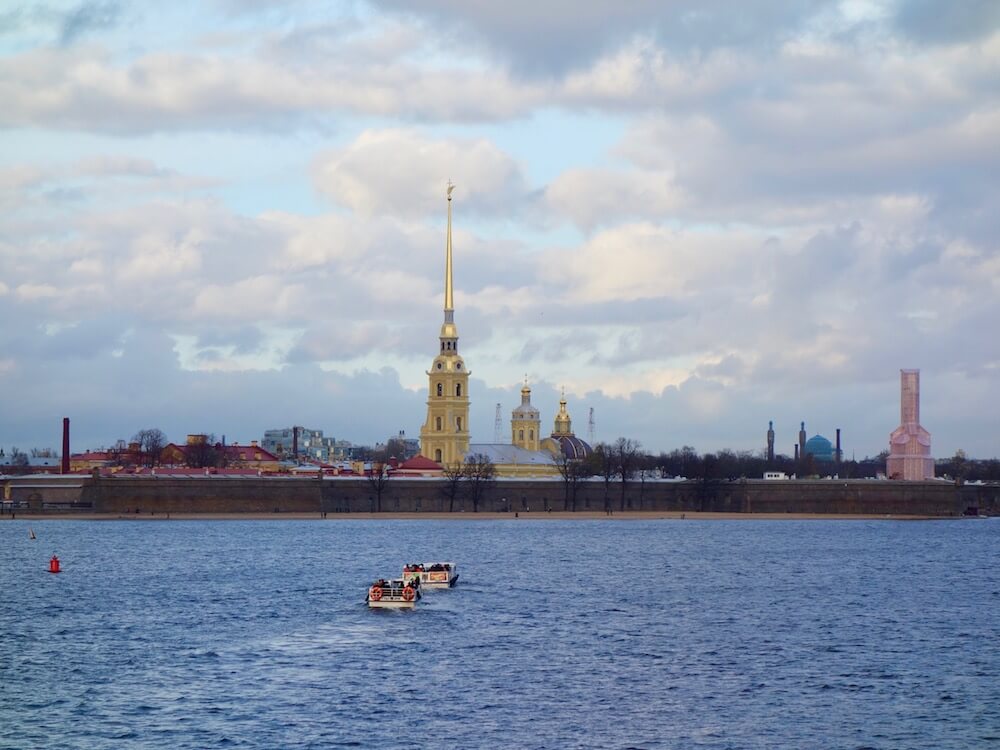
The Peter and Paul Cathedral can also be viewed along the River Neva. The cathedral was founded by Peter the Great more than 300 years ago, and was actually the original citadel of St. Petersburg!
The cathedral’s bell tower reaches a height of 122.5 metres, comprising the highest building in the city. The cathedral also serves as the final resting place of many Romanov rulers.
Stroll down Nevsky Prospect

Stretching a length of 4.5 kilometres, the royal avenue of Nevsky Prospect is the beating heart of St. Petersburg. The main thoroughfare is lined with multiple churches, palaces, hotels, restaurants, cafés and shopping boutiques. It’s said that the Nevsky Prospect is home to some of St. Petersburg most stunning buildings – such as Dom Knigi, the Winter Palace, Kazan Cathedral and the National Russian Library, just to name a few.
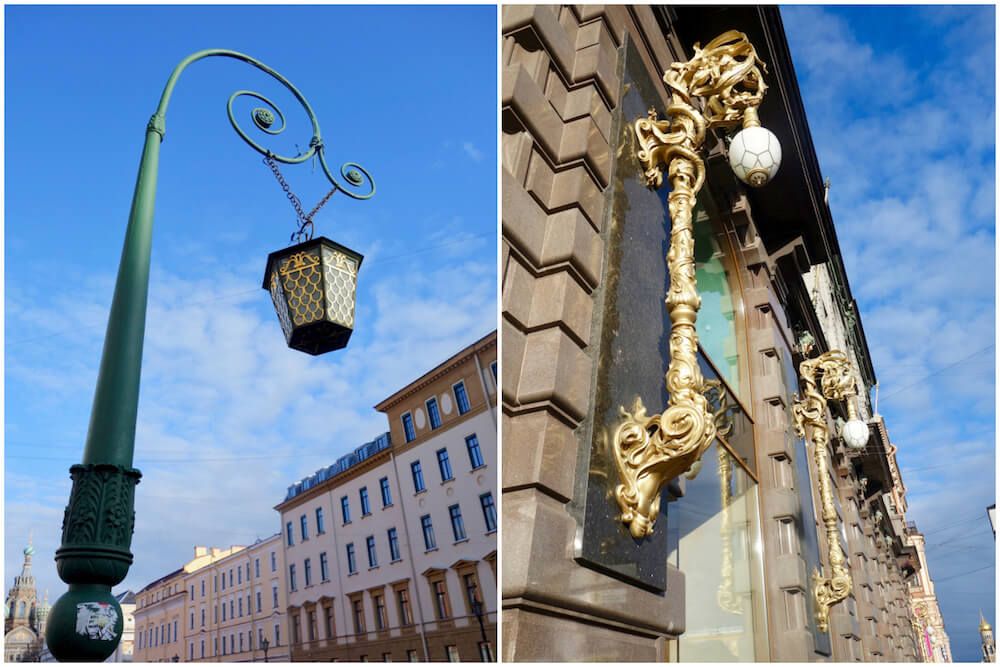
It’s the minute details that make the city of St. Petersburg so inextricably beautiful – even the lampposts are something to look at!
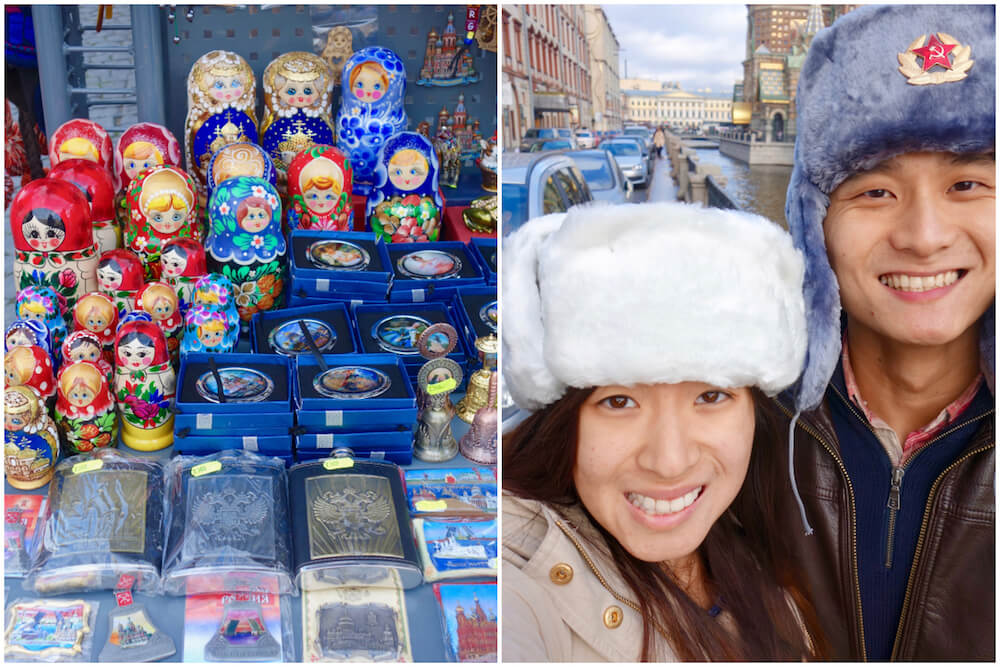
Grab a few souvenirs for your family and friends back home – take your pick from a nifty Russian doll set or a furry Ushanka hat.
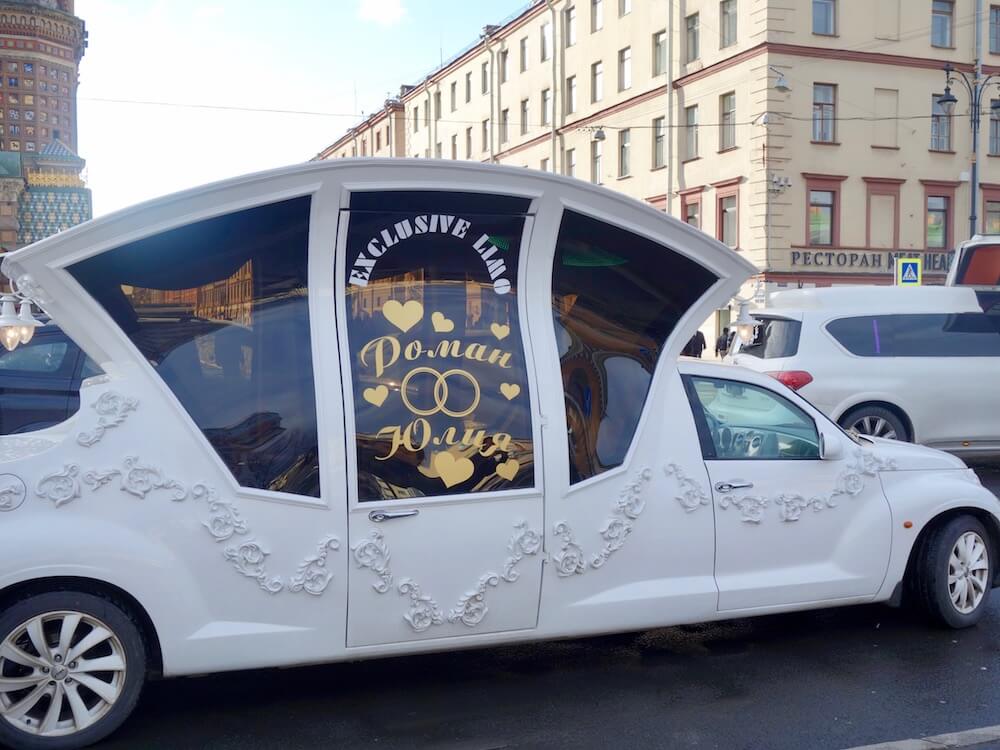
And if you needed any indication about what a trip to St. Petersburg would be like, just look at this fancy limousine for rent. Now, how’s that for travelling around the city in style?
A visa is needed to visit St. Petersburg; if you're hoping for a fuss-free experience, a visa-free Baltics cruise (that also goes to Stockholm in Sweden, Tallinn in Estonia and Helsinki in Finland) might be a good choice. Otherwise, do check with your local Russian embassy on how to successfully settle the visa application.
Read: A 4D3N Cruise to Stockholm, Tallinn, St. Petersburg and Helsinki

0 Comments Add a Comment?